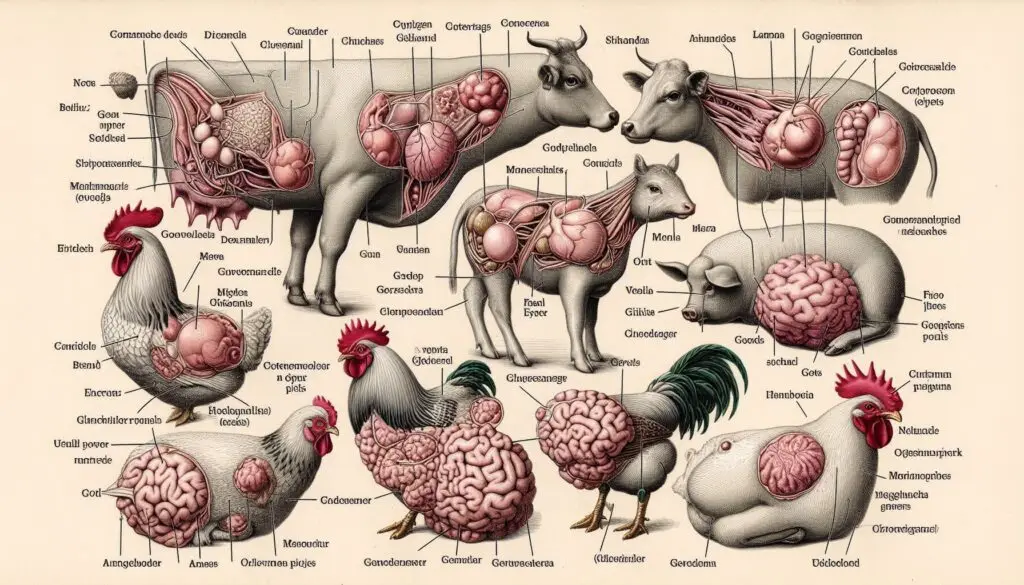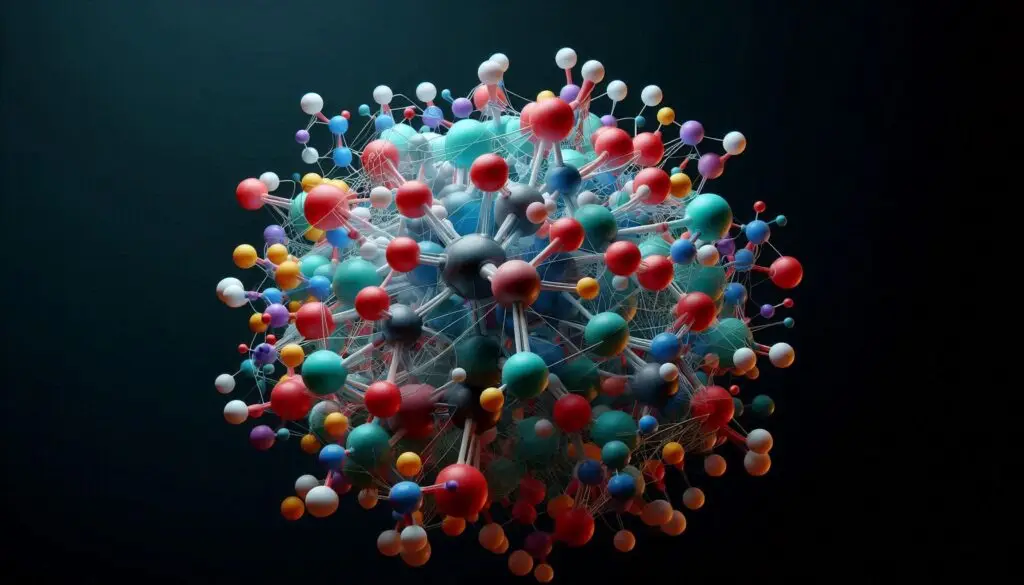Pancreas in Animals

Introduction to the Pancreas
The pancreas is a glandular organ located in the cranial abdomen of vertebrates. It has both endocrine and exocrine functions. The exocrine portion produces digestive enzymes that aid in food breakdown, while the endocrine section regulates blood sugar levels through hormone secretion. Understanding the pancreas’s structure and functions is essential for comprehending its role in animal health. For more detailed information on the anatomy and functions of the pancreas, you can refer to Stanford Medicine Children’s Health.
Anatomical Structure of the Pancreas
The pancreas has a unique anatomical structure that varies across different species. It generally consists of three main parts: the head, body, and tail.
Domestic Animals
In domestic animals like dogs and cats, the pancreas is a discrete organ located adjacent to the duodenum. In larger animals such as horses and cattle, it exhibits a more diffuse distribution within the mesentery.
Comparative Anatomy Across Species
Understanding how the pancreas varies among species enhances our knowledge of its functions:
- Dogs: The pancreas is located caudal to the liver and divided into three parts: right lobe, body, and left lobe. The right lobe lies along the duodenum while the left lobe extends towards the spleen.
- Cats: Similar to dogs, cats have a compact pancreas located near their duodenum, though their lobes may differ slightly in size and shape.
- Rats: The rat’s pancreas has a more dispersed structure within the mesentery compared to dogs or cats.
- Large Animals (Horses/Cattle): In larger mammals, the pancreas appears more diffuse with less distinct lobes.
Exocrine Pancreas
The exocrine pancreas constitutes the majority of pancreatic tissue. It is divided into lobules separated by connective tissue.
Acinar Cells
These cells line the acini and are responsible for enzyme production. They contain zymogen granules that store inactive enzyme precursors.
Ductal System
The ductal system collects secretions from acini and transports them to the duodenum. This system includes intercalated ducts, intralobular ducts, and interlobular ducts.
Endocrine Pancreas
The endocrine portion consists of clusters of cells known as islets of Langerhans. These islets contain different cell types that secrete hormones directly into the bloodstream.
Key Cell Types
- Alpha Cells: Produce glucagon, which raises blood sugar levels.
- Beta Cells: Produce insulin, which lowers blood sugar levels.
- Delta Cells: Secrete somatostatin, regulating insulin and glucagon secretion.
For further exploration of pancreatic functions, visit Kenhub.
Functions of the Pancreas
The pancreas plays two main roles: digestion through enzyme secretion and hormone regulation.
Digestive Functions
The exocrine pancreas produces several critical digestive enzymes:
- Amylase: Breaks down carbohydrates.
- Lipase: Digests fats.
- Proteases: Break down proteins (e.g., trypsinogen).
These enzymes are essential for nutrient absorption in the intestines.
Endocrine Functions
The endocrine pancreas regulates glucose metabolism through hormone secretion:
- Insulin: Lowers blood glucose levels by facilitating cellular uptake.
- Glucagon: Raises blood glucose levels by promoting glycogen breakdown in the liver.
This balance between insulin and glucagon is vital for maintaining stable blood sugar levels. For more on pancreatic diseases and their implications, check out Columbia Surgery.
Developmental Biology of the Pancreas
The pancreas develops from two buds during embryonic growth—dorsal and ventral—which fuse to form a single organ. Both exocrine and endocrine tissues arise from multipotent stem cells called pancreatic progenitor cells.
Health Implications Related to Pancreatic Function
Pancreatic health is crucial for overall well-being in animals. Disorders affecting this organ can lead to severe complications.
Pancreatitis
Pancreatitis is inflammation of the pancreas that can occur due to various factors such as diet or genetics. Symptoms may include vomiting, abdominal pain, and lethargy.
Causes:
- High-fat diets
- Obesity
- Certain medications
Treatment:
Treatment often involves dietary changes, medications to manage pain, and sometimes hospitalization for severe cases.
Diabetes Mellitus
Diabetes occurs when insulin production is insufficient or ineffective. This condition can lead to elevated blood sugar levels and requires careful management through diet or insulin therapy.
Symptoms:
- Increased thirst
- Frequent urination
- Weight loss despite normal or increased appetite
For comprehensive insights into pancreatic disorders, refer to NCBI StatPearls.
Conclusion
The pancreas plays an essential role in both digestion and hormone regulation across various animal species. Understanding its structure and function aids in recognizing health issues related to this vital organ. By maintaining pancreatic health through proper diet and care, pet owners can help ensure their animals lead healthier lives. For additional information about pancreatic anatomy and functions, visit Wikipedia.
More from Veterinary Physiology:
https://wiseias.com/abo-blood-group-system-animals/
https://wiseias.com/anticoagulation-in-animals/
https://wiseias.com/hemorrhagic-disorders-in-animals/






Responses